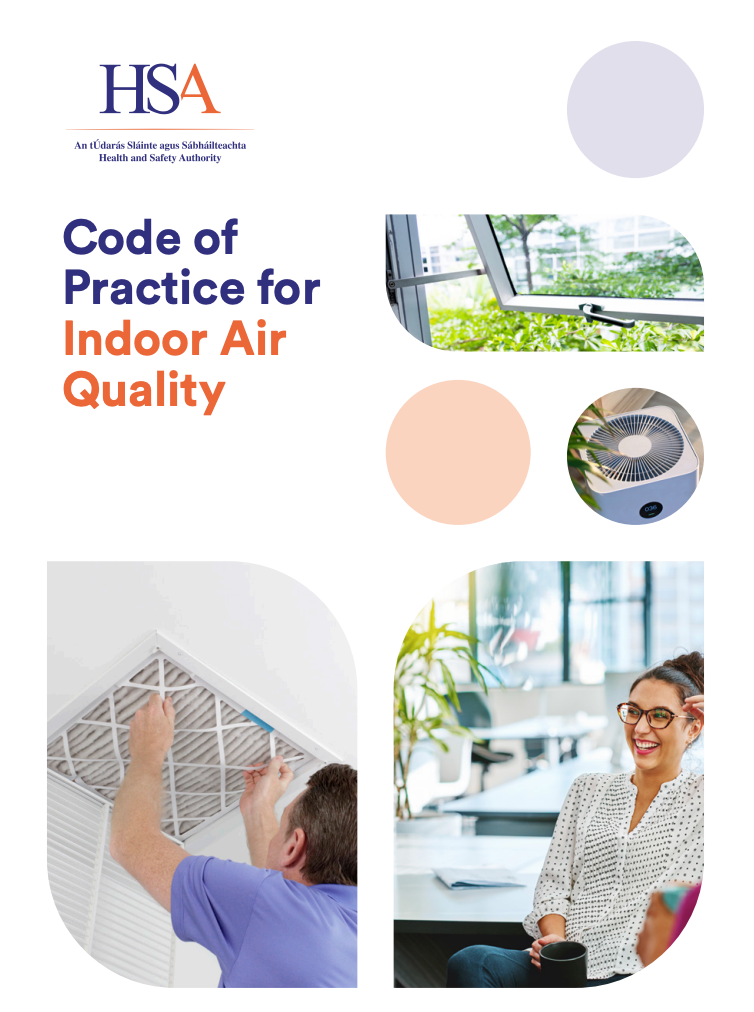
When we think of allergies, we often imagine seasonal spring allergies, but it is not just the outdoors that hides threats. The air we breathe indoors can also significantly impact our health. Poor indoor quality allows allergens and pollutants to build up, leading to respiratory issues and skin irritations. Common indoor allergens can include dust mites, pet dander, mould spores, and pollen. Without proper measures, these can accumulate in our homes and offices, triggering or even worsening our allergies. However, learning how these particulates contribute to air pollution in enclosed spaces can help us take the right measures to maintain a healthier living environment, reduce indoor allergens, and manage our allergy symptoms. In this article, we highlight key indoor air quality factors that aggravate allergies and share practical solutions for relief. How Indoor Allergens Can Worsen Our Allergies Increased Exposure to the Allergens Indoor environments can trap and expose us to particulate matter like dust, mould, and pet dander, which can trigger allergy symptoms. Without proper ventilation, allergens will continue to settle on furniture and linger in the environment. Over time, prolonged exposure can cause severe reactions in people with respiratory and dermatological conditions. Imbalances in Humidity Levels Humidity is another factor to consider. If the air is too dry, it can irritate the nasal passages and throat, increasing susceptibility to allergens. Too much humidity, however, creates the perfect environment for mould and dust mites to thrive—both common allergy triggers. Chemical Irritants Volatile organic compounds (VOCs) are common pollutants found in most indoor spaces, especially in paints, cleaning products, air fresheners, and some textiles. If you have been exposed to VOCs for an extended period, you may experience throat irritation, headaches, dizziness, and respiratory issues. If you're prone to allergies, these irritants can worsen your symptoms. Poor Ventilation If you do not maintain adequate airflow in your home or office spaces, the indoor air can become stagnant and trap allergens inside. As a result, dust, mould, and VOCs accumulate and circulate more easily in the air you breathe. This leads to a higher concentration of airborne irritants, and further worsens indoor air quality and existing allergies. How to Maintain Better Indoor Quality & Relieve Allergies Implement Air Purifiers In spaces where ventilation is limited, indoor allergy air purifier solutions and HVAC systems (Heat, Ventilation, and Air Conditioning) with filters can improve air circulation and reduce allergens. If you are thinking of installing a HVAC system, it’s recommended that you consider Mechanical Ventilation with Heat Recovery (MHVR) systems . They can provide a balanced extract and supply of air, recovering up to 95% of the heat that in any other condition would be lost. Considering the amount of resources that go into heating a big space, this type of system is something to keep in mind. Hence, installing this system is not only good for the economy of your business, but also beneficial for the occupants. These systems, especially those equipped with HEPA filters (high-efficiency particulate arresting filters), work by consistently drawing in air and filtering out contaminants. In this way, they trap airborne particles like dust, pollen, and pet dander, preventing them from circulating through your space. As a result, air quality is greatly enhanced, providing a cleaner and more comfortable environment for your customers and employees. Such systems can be invaluable for businesses aiming to improve employee well-being. They reduce exposure to irritants that can cause discomfort or trigger allergies, boost productivity, and create an overall healthier workspace. We advise placing air purifiers in high-traffic areas such as offices, meeting rooms, and break rooms, where allergens circulate the most. Control The Humidity Levels One way to help balance the humidity levels indoors is to use a dehumidifier when humidity is high, typically in areas like basements and bathrooms. When the air becomes too dry, especially in colder months, a humidifier can help add moisture to the air. The optimal level you should strive for is 30-50%. This range prevents mould growth, dust mites, and other allergens from accumulating, greatly improving indoor air quality. To help you understand humidity levels, our intelligent monitoring system, InBiot , can provide insights into indoor air quality and can help you detect harmful pollutants before they become a concern. If you're unsure about your space's humidity levels, schedule an indoor air quality assessment with our experts, and we will guide you to the right solution. Clean Your Space Regularly It’s as simple as that. Cleaning your indoor space regularly is still one of the most effective ways to minimise home allergens. Opt for vacuums with HEPA filters to remove all dust, pet hair, and pollen from carpets and upholstery. Dura Vacuums are also an excellent choice for maintaining healthy air quality and controlling dust buildup in your indoor spaces. They are designed to withstand the demanding conditions of industrial environments and can effectively handle both wet and dry particles. Additionally, regularly dusting surfaces and washing bedding, curtains, and rugs in hot water will help reduce allergens in the air. Another good idea is to make sure you declutter your place often, as this can also reduce the risk of dust buildup and potential hiding spots for allergens. Ventilate Often Another simple measure that never fails is to make sure you ventilate your indoors as often as possible. Open your windows whenever the weather permits it, and use exhaust fans in the kitchens and bathrooms. For those with allergies, combining this with high-quality HVAC filters and cleaning air ducts to reduce airborne irritants is best. Opt for Hypoallergenic Materials There are many materials in our closed spaces that can contribute to indoor air pollution. Whenever you can, choose more natural or non-toxic cleaning products and materials, preferably with low VOC, and make sure to ventilate when using chemical-based products. You can also take things further by choosing wool and cotton bedding,hardwood floors instead of carpets. It is more difficult for irritants to accumulate on these materials and surfaces. Eliminate Mould & Mildew One of the major triggers for allergies and other respiratory issues, mould spores should be cleaned as often as possible. You can regularly inspect damp areas like bathrooms, kitchens and basements with the help of professionals to prevent mould growth. To further contribute to healthier indoor air, use mould-resistant paint and fix leaks as soon as possible. Improving Indoor Air Quality The key to keeping allergens at bay is maintaining optimum air quality indoors. Simple changes in habits like regularly cleaning our spaces and ventilating whenever we can can significantly improve air quality. Devices such as purifiers and HVAC systems can be another proactive approach to supporting long-term health. If you are not sure what products can help you manage indoor air quality, contact our team and we will help you take the best steps in the fight against indoor pollution and allergens.

Air quality is a problematic factor influencing public health and environmental well-being. In the UK, specific cities have a standout reputation for air quality, achieved by combining solid ecological policies, geographic advantages, and proactive sustainability measures. In this article, the air quality specialists at Ultra Protect explore these cities, delving into their current air quality indices, historical pollution challenges, and strategies to maintain clean air. How is Air Quality Measured in the UK? In the UK, air quality is measured by the Daily Air Quality Index (DAQI), which ranges from 1 to 10 in bands from Low to Very High. This index uses concentrations of four principal pollutants: nitrogen dioxide, sulphur dioxide, ozone, and particulate matter. Stations that monitor pollution nationwide collect information on primary pollutants, allowing experts to get accurate and real-time air quality assessments. This monitoring network is overseen by the Department for Environment, Food & Rural Affairs, providing the public with up-to-date data on air pollution levels. UK Cities with the Cleanest Air 1. Edinburgh Current Index: Edinburgh maintains a DAQI in the Low. History of Pollution & Measures Taken During the industrial era, Edinburgh faced extremely high levels of smoke and sulphur, pollutants attributed to vast amounts of coal burning. Since then, the city’s governing powers have implemented environmentally favourable measures to establish smoke control areas and promote greener energy sources. The introduction of the Edinburgh Air Quality Action Plan further targeted emissions from transport and industry, significantly reducing airborne pollutants. Why Edinburgh has Clean Air By garnering citywide collaboration and instating environmental policies, Edinburgh can successfully maintain better air quality. The city’s efforts to reduce vehicle emissions through low-emission zones and promote electric vehicles have played a significant role. Geographical Location & Affect on DAQI The city of Edinburgh is set along the east coast of Scotland and benefits from coastal winds that assist in dispersing pollutants. The city’s environmental efforts and geographical location greatly contribute to its commendable air quality. 2. Aberdeen Current Index: Aberdeen maintains a DAQI in the Low. History of Pollution & Measures Taken Aberdeen's industrial activities have historically contributed to air pollution levels, specifically in the oil and gas sector. In response, the city enforced the Aberdeen City Air Quality Action Plan, which, like Edinburgh, focuses on reducing emissions from transport and industry. Promoting cleaner technologies and establishing monitoring stations have played a pivotal role in Aberdeen’s environmental efforts. Why Aberdeen has Clean Air The city implemented hydrogen-powered buses and proactively promoted cycling and walking. Combined with stringent regulations regarding industrial emissions, Aberdeen’s initiatives have improved the city’s air quality. Geographical Location & effect on DAQI Like Edinburgh, Aberdeen’s natural disposition as a coastal city means its air quality benefits from prevailing winds. 3. Dundee Current Index: Dundee maintains a DAQI in the Low. History of Pollution & Measures Taken Being an industrial city, Dundee once experienced air quality issues due to manufacturing activities. However, the city has since combated these challenges by implementing the Dundee Air Quality Action Plan, which promises to reduce industrial emissions while promoting sustainable transport. Why Dundee has Clean Air With a dedication to environmental and ecological sustainability, Dundee has greatly reduced pollution, as seen in the city’s extensive electric vehicle charging points network. The city’s efforts to reduce traffic congestion, introduce greener modes of transport and encourage electric vehicles have profoundly impacted air quality. Geographical Location & Affect on DAQI Dundee is situated along the Firth of Tay, which provides the city with natural ventilation. 4. Portsmouth Current Index: Portsmouth maintains a DAQI in the Low. History of Pollution & Measures Taken As a historic port city, Portsmouth has had pollution from maritime and industrial activities. The Portsmouth Air Quality Action Plan concentrated on reducing shipping and road traffic emissions and has seen big improvements. Why Portsmouth has Clean Air The city has promoted cleaner shipping technologies, set up low-emission zones, broadened public awareness with environmental campaigns and invested in sustainable transport to tackle pollution. Geographical Location & Affect on DAQI Portsmouth's coastal location, with sea breezes as an essential factor, facilitates the natural dispersal of pollutants. 5. Bath Current Index: Bath maintains a DAQI in the Low. History of Pollution & Measures Taken The historic Roman city of Bath’s air quality was once severely affected by vehicle emissions and industrial activities. However, over time, various initiatives have been implemented to reduce pollution and address these environmental concerns. In 2021, the city introduced the Clean Air Zone (CAZ), which targeted highly polluting vehicles to curtail emissions associated with road traffic. Other efforts, such as installing green spaces and promoting pedestrian-friendly areas, have worked to preserve Bath’s cultural heritage and safeguard the city’s overall air quality. Why Bath has Clean Air The Clean Air Zone has significantly reduced vehicular pollution while further decreasing dependence on cars through the promotion of public transport and cycling initiatives in the city of Bath. As a UNESCO World Heritage Site, Bath has increased the implementation of strict policies to nurture and maintain the city’s environmental well-being. Geographical Location & Affect on DAQI Bath is located in a valley and surrounded by hills. Although its geographical location may at times permit concentrations of emissions, the city’s proactive policies offset these difficulties, allowing air quality to remain consistently impeccable. Factors Contributing to Clean Air in These Cities These cities have achieved impeccable air quality through environmental policies, sustainable technology, and geographical location. Promoting public transport, establishing low-emission zones, and investing in sustainable infrastructure have only proven beneficial. For more detailed information on air quality indices and monitoring in the UK, resources such as the UK-AIR website provide comprehensive data and updates. Taking Control of Your Air Quality Clean air is essential for our health and the environment. As UK cities like London still struggle with air quality, reminding us that the battle against pollution is far from over; cities like Edinburgh, Aberdeen, Dundee, Portsmouth, and Bath—though they may be geographically well-positioned—have also instated the correct measures to maintain a low DAQI. Whether you live in a city known for its clean air or one still working to reduce pollution, protecting your health is vital. The experts at Ultra Protect offer advanced air quality assessments to help you safeguard your indoor air quality. Don’t wait to take control— get in touch today and take your first breath towards cleaner air.













